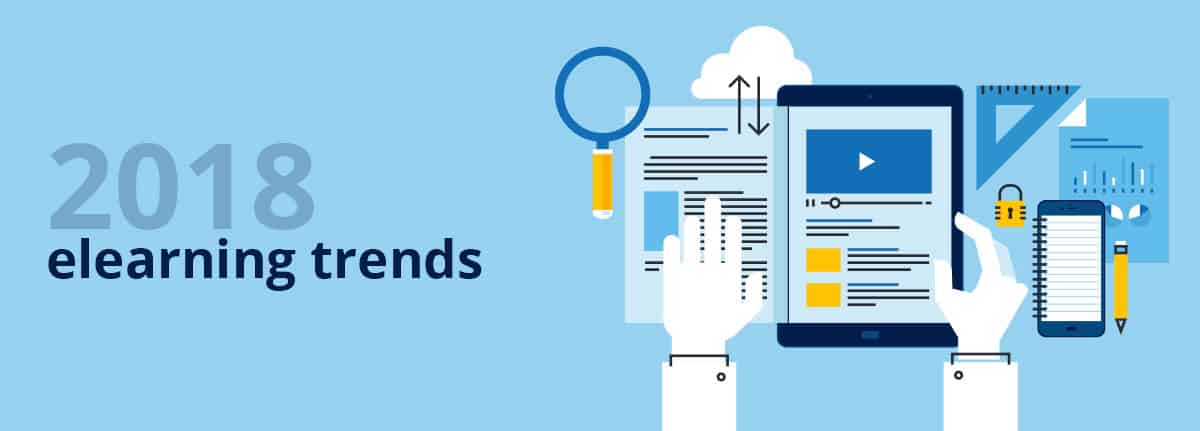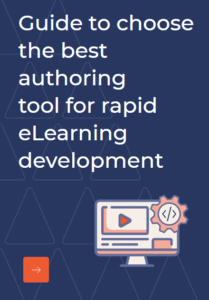Mirror, mirror on the wall, which is the awe-inspiring trend amongst them all?
Yes, it is that time of the year again where the eLearning clairvoyants observe the trends through their mystical eyes (crystal balls, hocus-pocus, fortune cookies-jars, whatever!!!) and present the trends for the year that is to come. Well, we do not have an in-house mystic nor fortune-teller, but all through the year we have been closely observing the subtle changes in the market, the hypes, the discarded ones and by gathering the bread crumbs we have collated a list of our own.
According to Docebo’s - Elearning market trends and forecast 2017-2021, “The size of the eLearning market was estimated to be over USD 165 Billion in 2015 and is likely to grow by 5% between 2016 and 2023, exceeding USD 240 Billion.” Global E-learning Market Report 2017 - Strategic Assessment and Forecast 2016-2022, by Research and Markets, predicts that, “The global e-learning market is likely to grow at a CAGR of more than 6% during the forecast period.” eLearning is not going anywhere for sure and the latest trends play pivotal role in reshaping it. Let’s look at what stands ahead for eLearning in 2018.
1. Machine Learning and Artificial Intelligence
Steven Spielberg can definitely say, “I told you so.” While Artificial Intelligence (AI) is a broad level term, machine learning is its subset- algorithms that predict outcome based on the input data. As the intuitiveness of machines tend to grow, the analytical and predictive aspects stand chance to increase to a great extent. To eLearning AI and Machine Learning offers personalized content to fill the skill gaps for individual learners, increased motivation through new effective training programs, better resource allocation, improved scheduling and content delivery and much more.
2. AR and VR
Augmented Reality and Virtual Reality have been touted as upcoming trends for a couple of years now, but believe it or not the trend isn’t waning away any soon. And looking at the current availability of softwares for creating AR (even Smart phones offer the feature now) and the cheaper easily distributable VR gear, it’s widespread inclusion in eLearning is no longer just a far-fledged thought. Learning is strategically moving towards becoming more immersive, AR and VR could just be the right tools.
3. Microlearning
2017 has been all about millennials, short attention spans and mobile devices- all leading to one solution, i.e. microlearning. Looking at the way smart-devices too (with smaller screen sizes) are being included into the eLearning space and considering how the general volume of work tends to keep the learners pretty busy, microlearning stands the chance to completely transform the learning space. With new trends like gamified microlearning too gaining traction, there sure is a lot to be anticipated.
4. Connected Devices
The word is ‘smart’. From smart phones to smart buildings to smart everything, IoT (Internet of Things) has connected everything. Its impact on eLearning could be enormous. Imagine the machine/instrument training the learners on its own (well then one might think, why the human help at all, but still bearing in mind that a human touch is always required). The world of connected devices is sure a part of eLearning (multi-device, continuous learning!), but still has a long way to go.
5. Mentoring & Social Learning
Learning 3.0 is old story now Learning 4.0 is here advocating the need for personalized learning, more freedom of choice. While peer-to-peer learning is still important, learning may now hinge more on mentorship program driven by personal data analysis, digital networks, assisted by collaborative platforms, shared content and resources, social media interactions- social progresses etc. Learner involvement can completely change with learners taking more ownership over the content and greater technological integrations.
6. Video-based Learning
Video has already established its niche in eLearning. Interactive videos, short nuggets, animations, explanative - it takes any form depending on the learning requirement and can be utilized to deliver face-to-face training too. With YouTube and many other platforms that allow free streaming, the trend is not going to fade out any soon.
7. Learning on the Go (Mobile Learning)
It’s definitely the era of smartphones and the numbers just continue to grow. Be it as videos or microlearning, AR or VR based, or as games, mobile learning is a sure shot way to reach maximum number of learners and to ensure increased participation and effectiveness too.
8. Game Based Learning
The inclusion of game elements in learning remains a favorite among learning developers and rightly so. For a generation that has grown up playing games on mobile devices and play stations, addition of game elements in learning gives it a familiar feeling, and not just that it gives a sense of competition when leader boards show what the peers have achieved, and a sense of accomplishment when awards or badges are won for completion of tasks. An effective game-based learning system, takes the learners towards the learning objective while allowing the learners to choose actions and experience the consequences of those actions, all in a risk-free setting. It allows them to learn actively and participate fully.
Apart from the above mentioned Serious games, webinars, podcasts etc. too are gaining popularity once again. 2018 could definitely be the year of comeback for those. Authoring tools and LMS’ too stand to evolve with the latest trends, truly revolutionizing eLearning from content development to delivery and more.



